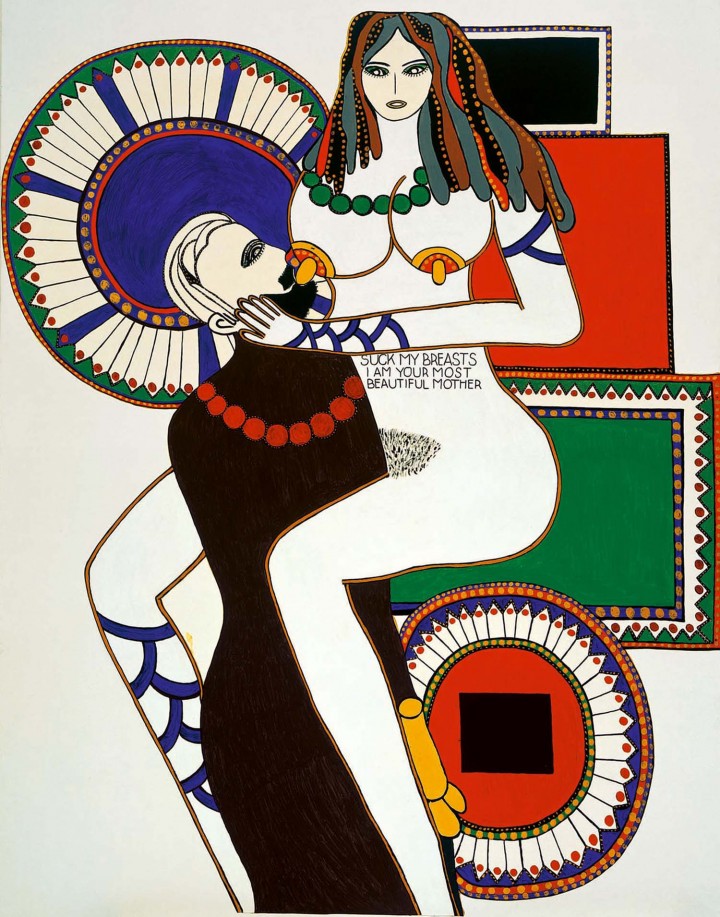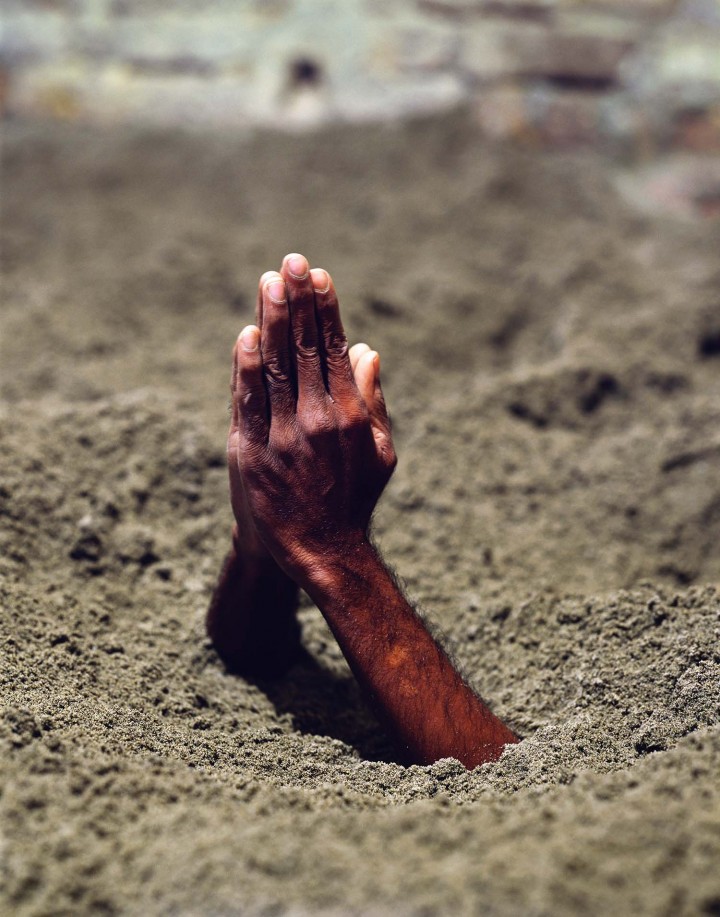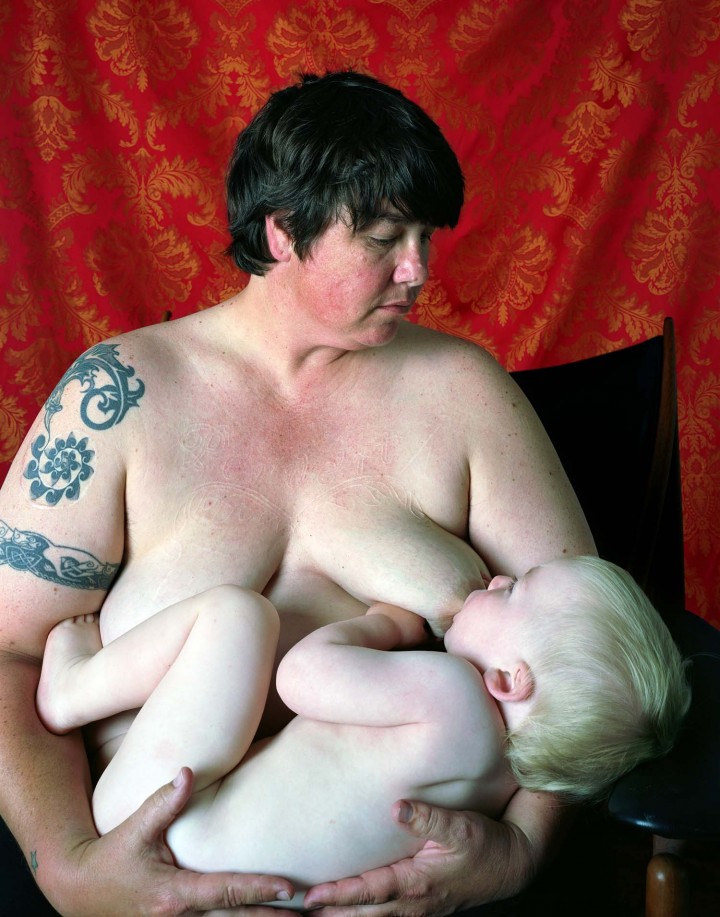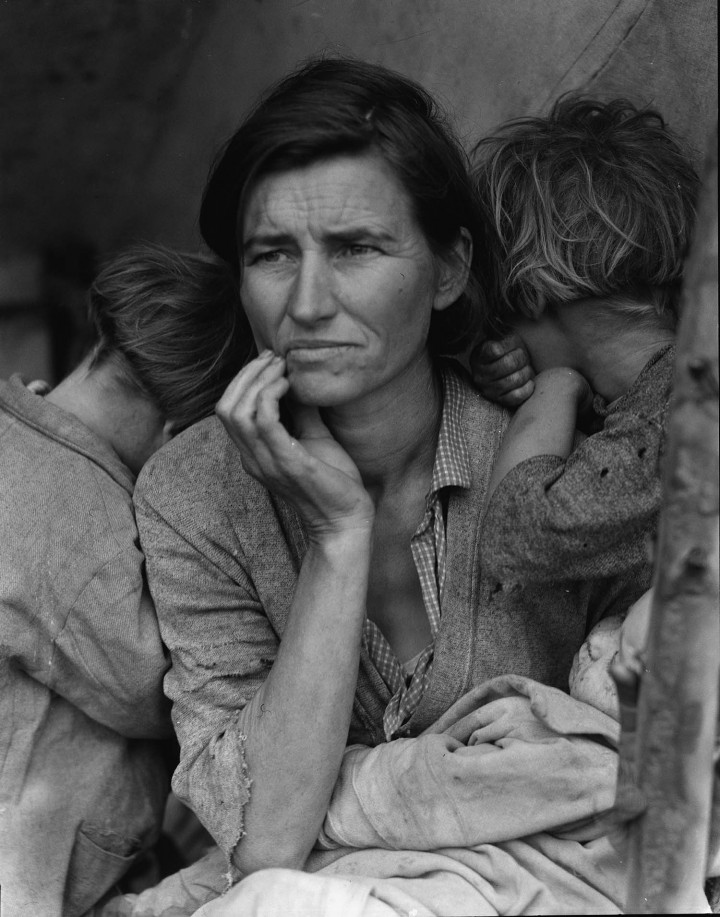Curated by Massimiliano Gioni and produced by the Trussardi Foundation for Milan’s Palazzo Reale, “La Grande Madre” imposes its visual matrix from the third hall, one of the vastest of the entire layout, dominated by Lucio Fontana’s enormous Concetto Spaziale. La fine di Dio (1963–1964). Painted with a dense pink-colored paste, it is an invitation to penetrate the surface of maternity’s primordial form.
The successive eight halls, with works by Méret Oppenheim (the strangling angel Votivbild from 1993), Benedetta (Velocità di un motoscafo, 1922) and Enif Robert (the experimental novel Un ventre di donna, 1919) — not forgetting the eurhythmic movements of Giannina Censi or the Manifesto della Donna Futurista. Risposta a F.T.Marinetti by Valentine de Saint-Point — form passages through the history of the avant-garde in which the prismatic splendor of a dream-like figure of a Great Mother appears with fragmented integrity. Here biographical events overlay artistic production: cross-sections of lives at the limit, hallucinatory testimonies, like Maria Mori’s painting L’ebrezza fisica della maternità (1936), the dada poiesis of Mina Loy and Emmy Hennings, the experimental practice of Elsa von Freytag-Loringhoven, the delicate assonances of Sophie Taeuber-Arp, the photomontages of Hannah Höch, the works of artist and acrobat Maria Nusch Éluard, the surrealistic Hexentanze (1926) by Mary Wigman, photographs by Claude Cahun and the esoteric symbolism of Leonora Carrington, Dorothea Tanning and Remedios Varo.
In the thirteenth hall, with photographs by Diane Arbus and projections of La ciociara and Mamma Roma, the works exhibited acquire a contemporary solemnity, substituting the archetype of femininity with the body of the woman, the body of the mother, the body of the performer-female. Following the monumentality of Koons’s Balloon Venus (Red) (2008–12), “La Grande Madre” begins to hatch, bestowing visions of the Origin of origins amid works by Louise Bourgeois, Carla Accardi, Pippiloti Rist and Lorraine O’Grady.






